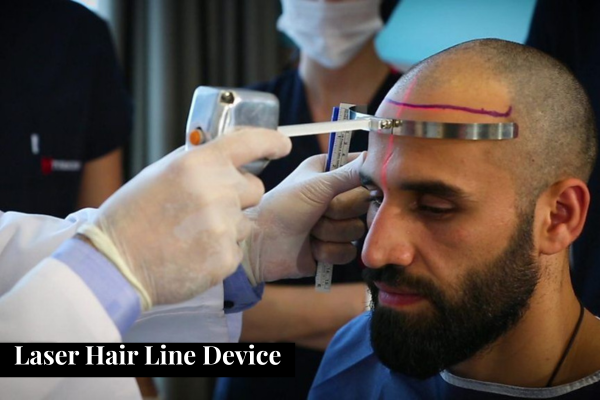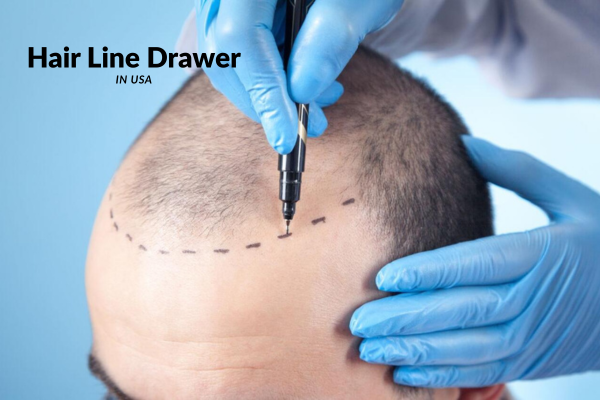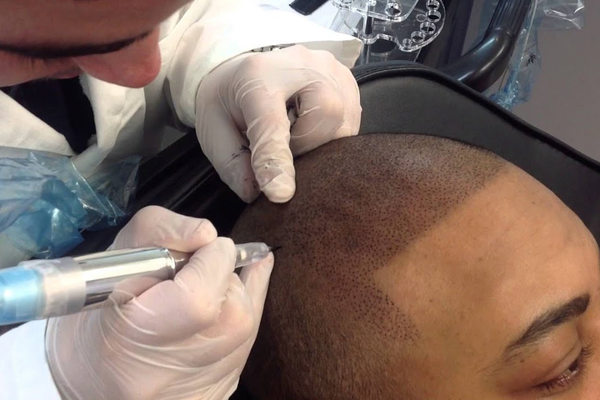A Laser Hair Line Drawer is an important tool in hair transplant surgery because designing the frontal hairline is the most crucial step for achieving a natural look. Here’s why it is needed:
Why a Laser Hair Line Drawer is Needed in Hair Transplant
A Laser Hair Line Drawer is a fast, repeatable way to project crisp, perfectly aligned reference lines for hairline design — improving precision, symmetry, patient communication, and documentation. It’s a marking tool (not a treatment laser) that reduces human measurement error and speeds planning in every case.
Key reasons
- Precision & symmetry: Projects a true straight/curved line and midline so you get millimetre-level alignment of frontal hairline, widow’s peak, and temples.
- Reproducibility: Same settings = same reference every time (helpful in multi-stage cases or repeat consults).
- Patient involvement & consent: Patients can see the proposed line projected on their forehead, request tweaks, and give informed consent visually — avoids misunderstandings.
- Faster workflow: Quicker than repeated manual measuring with calipers and less staff time spent marking.
- Consistent angulation planning: Helps map coronal/sagittal orientations and density zones visually across the whole frontal zone.
- Better documentation: Photos of the projected line provide objective pre-op records for marketing, medico-legal, and follow-up comparisons.
- Training & team coordination: Useful for assistants and trainees — everyone sees the same guide during implantation.
- Reduced errors in high-volume clinics: Minimizes small misalignments that add up across large sessions or densely packed recipient sites.
- Perfect Symmetry
- Natural Hairline Planning
- A precise tool ensures the hairline is neither too low nor too high.
- Helps achieve a natural, age-appropriate design that suits the patient’s face.
- Time-Saving & Easy Marking
- Traditional freehand marking with pen can be inconsistent.
- A laser hair line drawer makes marking quick, accurate, and consistent.
- Better Surgical Outcomes
- Accurate hairline placement means grafts are implanted in the right zones.
- Improves overall appearance and patient satisfaction.
- Professional Presentation
- Gives patients confidence before surgery — they can visually approve the hairline design.
- Shows professionalism and modern technology in the clinic.
- Useful for Different Head Shape
- Works well on round, oval, or irregular head shapes.
- Provides a guideline that the surgeon can adjust as per facial proportions.
Practical clinical checklist (use during consult & surgery)
- Seat patient upright for natural hairline fall.
- Project laser, align to facial midline (glabella/nasal bridge), confirm level with caliper if desired.
- Show patient, adjust until both agree.
- Mark the laser line with sterile skin marker/dot technique for implantation reference.
- Photograph (pre-op) for records.
- Use eye-protection policy if laser is strong or near eyes.
Safety & vendor tips
- It’s a visible-guide laser — not a therapeutic laser. Follow basic laser safety: avoid direct eye exposure, follow vendor PPE guidance, and use medical-grade devices with CE/FDA labeling when possible.
- Prefer devices that allow adjustable line length/angle, battery + mains options, and mounting (hands-free tripod/arm) for stability.
Links – https://guruhairinstruments.com/hair-line-drawer/?utm_source=chatgpt.com

 FUE Punch – best hair transplant punch
FUE Punch – best hair transplant punch




